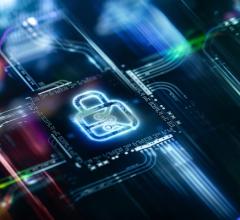
December 19, 2016 — A recent report from market research firm Signify Research presents five reasons why artificial intelligence will increasingly be used in radiology in the coming years. The report concludes with a list of the barriers that will first need to be overcome before mainstream adoption of artificial intelligence will occur.
Artificial intelligence, such as neural networks, deep learning and predictive analytics, has the potential to transform radiology according to Signify Research, by enhancing the productivity of radiologists and helping them to make better diagnoses.
The reasons presented for the expected continued growth of artificial intelligence are:
1. Global shortage of radiologists
According to the report, in most countries there is an insufficient number of radiologists to meet the ever-increasing demand for imaging and diagnostic services. Signify Research expects the situation to continue getting worse, as imaging volumes are increasing at a faster rate than new radiologists are entering the field.
2. Enhanced productivity
Use of artificial intelligence can help enhance radiologist productivity in several ways, including:
- Providing smart alerts to regions of interest in an image
- Automatic image annotation and quantification
- Faster access to patient information held in electronic health records (EHRs) and other systems
- Compare readings with images, diagnoses and outcomes of similar cases
- Create draft reports for radiologists
3. Better diagnostic accuracy
The report noted that use of artificial intelligence in radiology can help:
- Reduce human error
- Expedite early interventions
- Accurately track the growth of lesions and tumors over time
- Offer more quantitative and objective diagnosis
- Provide an automated second opinion
4. Lower rates of misdiagnosis
According to data cited in the report, the average error rate for radiologists for unselected cases is 4 percent, and the average retrospective error rate of radiologists is 30 percent. Signify Research noted that machine learning algorithms can alert radiologists to disease indicators. Cognitive computing can also mine patient records and medical literature to provide radiologists with relevant information and to compare new cases with existing ones.
5. Improved patient outcomes
While all of these factors support increased use of artificial intelligence, several barriers to widespread adoption still remain, according to Signify Research. These include:
- More clinical evidence is needed regarding the performance of machine learning algorithms in radiology applications;
- Resistance from some radiologists who see cognitive computing as a threat;
- High level of skepticism regarding existing (not machine learning-based) computer-aided detection solutions (e.g., CAD for mammography) due to alert fatigue;
- The “black box” nature of machine learning algorithms can undermine radiologists’ confidence in the results;
- Regulatory bodies (i.e., the U.S. Food and Drug Administration) have taken a cautious approach to approving solutions that use machine learning techniques;
- Most of the current solutions are for specific use cases, e.g., detection of lung nodules in chest computed tomography (CT) scans. But radiologists typically require a comprehensive tool kit with a suite of algorithms capable of detecting a wide range of conditions across multiple modalities;
- Potential for legal complications; and
- Machine learning algorithms for detection will gain acceptance in the coming years; however, it will likely be at least five years, according to the agency (and possibly many more) before computer-aided diagnosis becomes mainstream.
The report can be downloaded for free here.
For more information: www.signifyresearch.net


 January 14, 2026
January 14, 2026 









